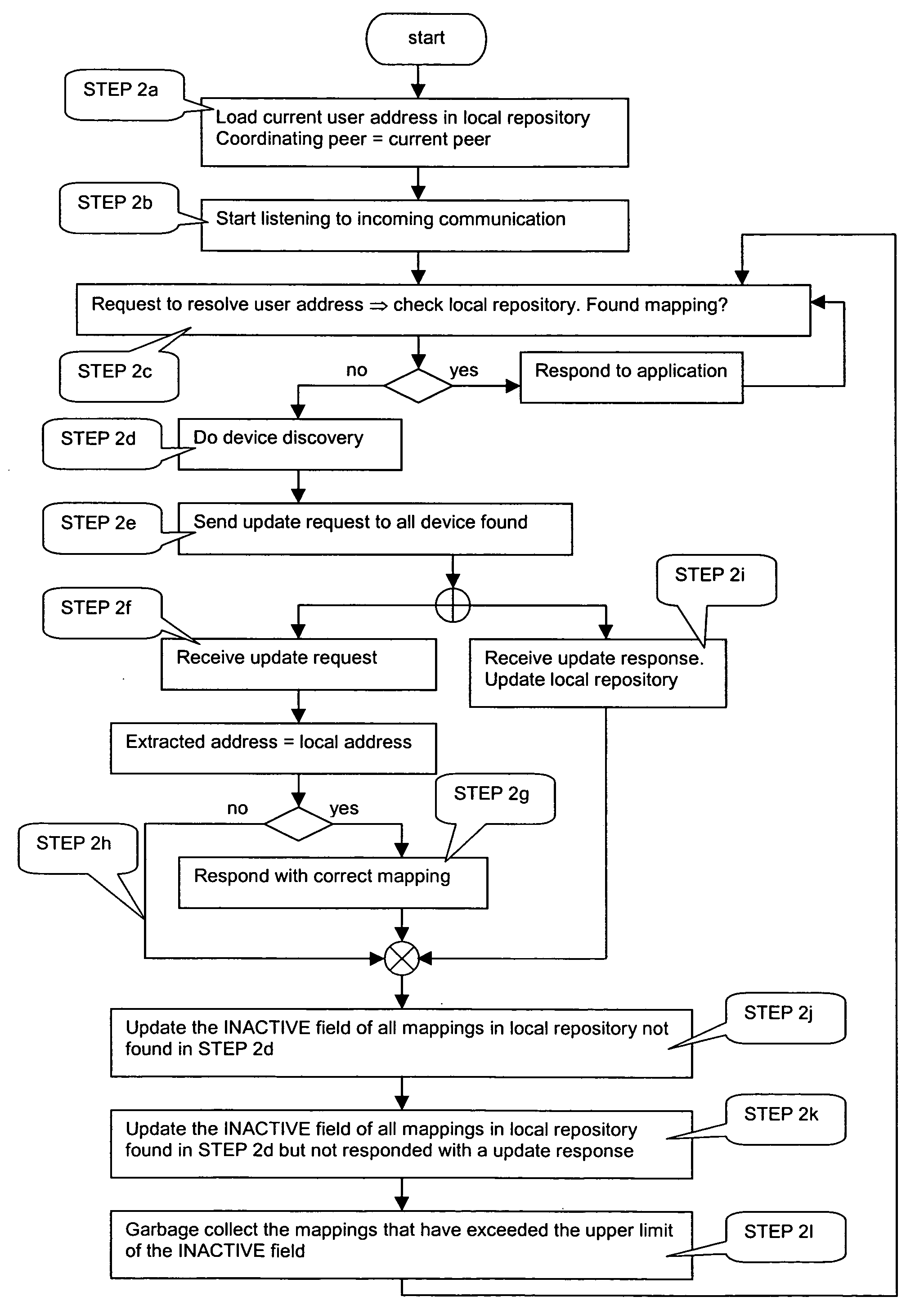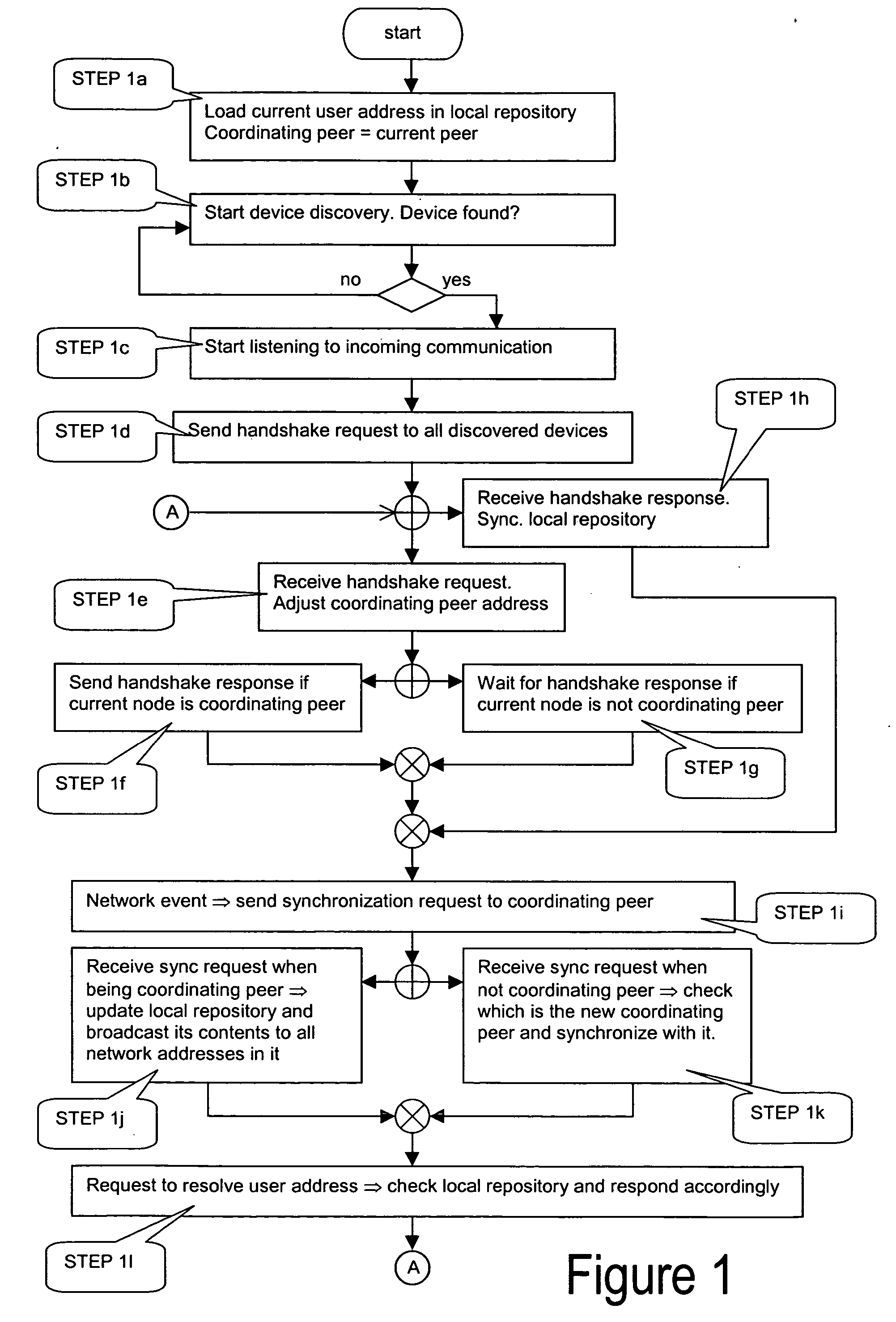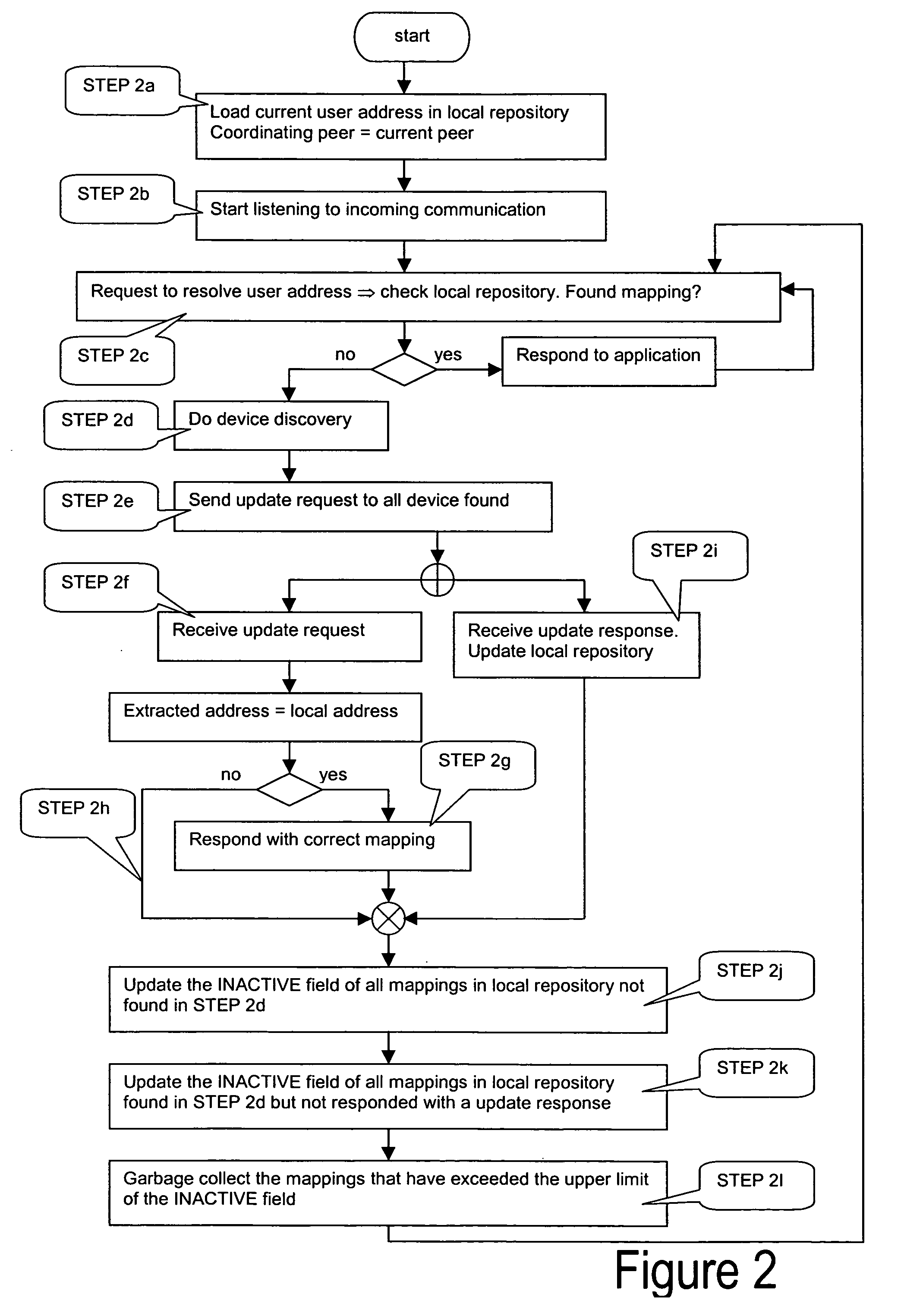User-location service for ad hoc, peer-to-peer networks
a peer-to-peer network and user-location technology, applied in the field of user-location service can solve the problems of large overhead signalling, limited practical interest, and unsuitability for ad-hoc, peer-to-peer networks
- Summary
- Abstract
- Description
- Claims
- Application Information
AI Technical Summary
Benefits of technology
Problems solved by technology
Method used
Image
Examples
first embodiment
[0037]FIG. 1 provides the flowchart that summarizes STEPS 1a-1l of this invention that describes the distributed synchronization protocol for DULS.
[0038] The distributed synchronization protocol for DULS instances according to the first embodiment of the method of this invention prescribes the deployment of one DULS instance per peer in the ad hoc network. A DULS instance includes a local Repository that contains mappings of user addresses to network addresses plus the logic captured in the sequence of interactions, which allows the local Repositories to keep their contents synchronized. This sequence of DULS interactions is described in the following steps (STEP 1a-STEP 1l).
[0039] STEP 1a: when a DULS instance is activated (e.g. when the Bluetooth transceiver on device is switched on), it sets the address of the coordinating peer to be the network address of the local device. Then, it loads to the local Repository the entries that contain the mappings of the current user addresses...
second embodiment
[0052]FIG. 2 provides the flowchart that summarizes STEPS 2a-2l of this invention that describes the lazy update protocol for DULS.
[0053] The second embodiment of the invention describes a lazy update protocol for DULS instances in an ad hoc, peer-to-peer network and it is only based on the general assumptions presented in the beginning of this section.
[0054] The lazy update protocol for DULS instances described in the second embodiment of this invention prescribes the deployment of one DULS instance per peer in the ad hoc network. A DULS instance includes a local Repository that contains mappings of user addresses to network addresses plus the logic captured in the sequence of interactions, which allows the local Repositories to keep their contents up-to-date with the current network view (i.e. the set of peers present in the network). This sequence of DULS interactions is described in the following steps (STEP 2a-STEP 2l).
[0055] STEP 2a: same as STEP 1a.
[0056] STEP 2b: same as ...
PUM
 Login to View More
Login to View More Abstract
Description
Claims
Application Information
 Login to View More
Login to View More - R&D
- Intellectual Property
- Life Sciences
- Materials
- Tech Scout
- Unparalleled Data Quality
- Higher Quality Content
- 60% Fewer Hallucinations
Browse by: Latest US Patents, China's latest patents, Technical Efficacy Thesaurus, Application Domain, Technology Topic, Popular Technical Reports.
© 2025 PatSnap. All rights reserved.Legal|Privacy policy|Modern Slavery Act Transparency Statement|Sitemap|About US| Contact US: help@patsnap.com



